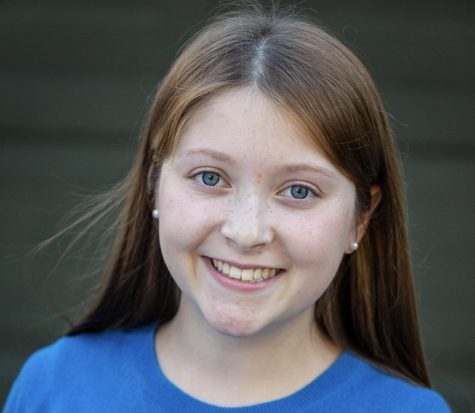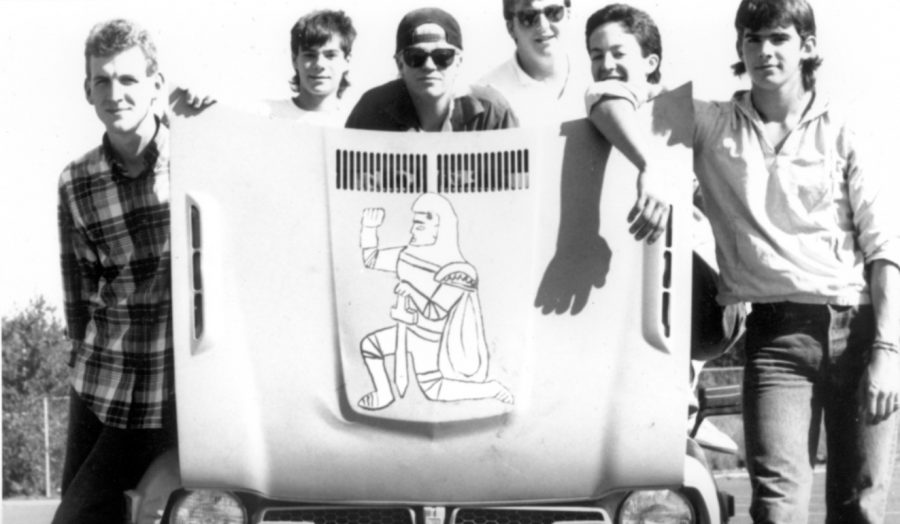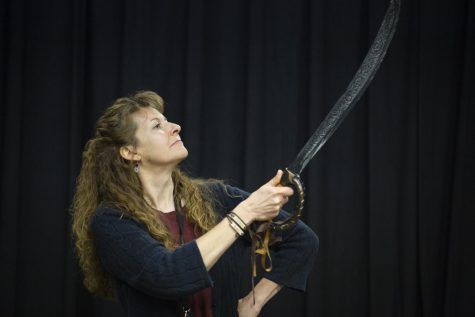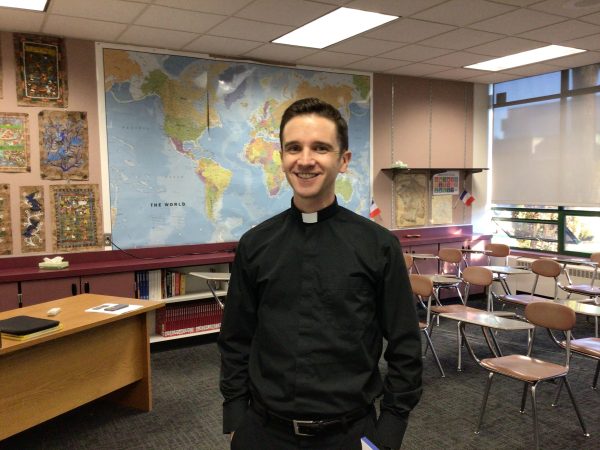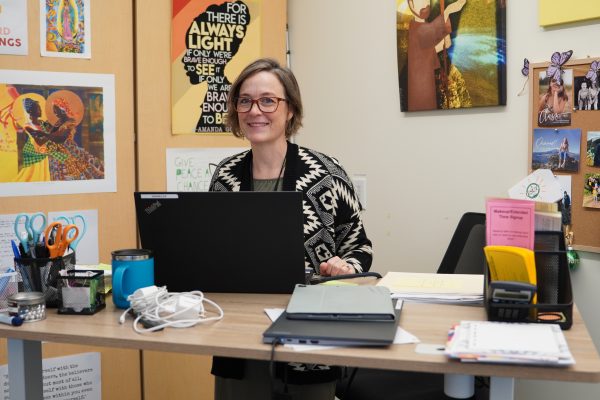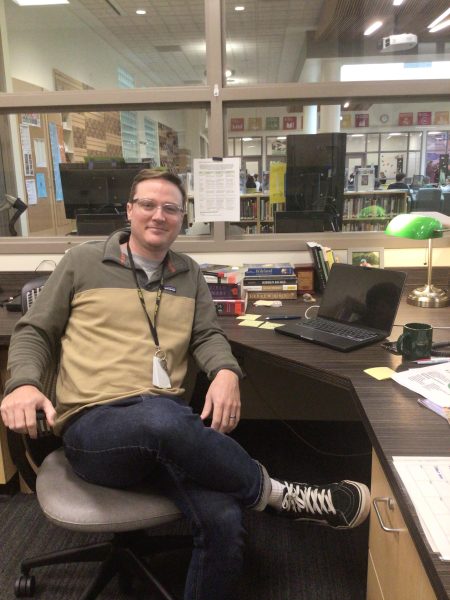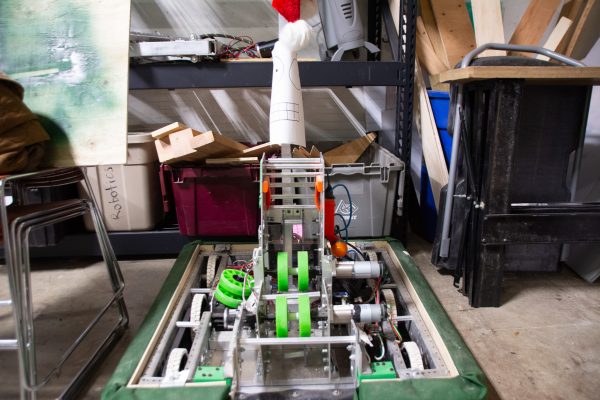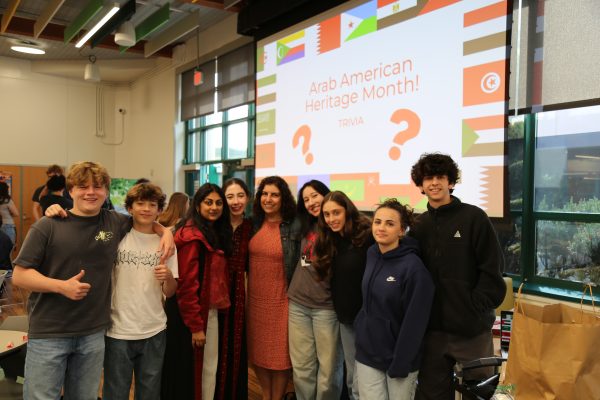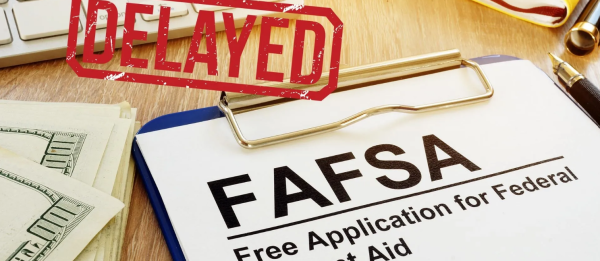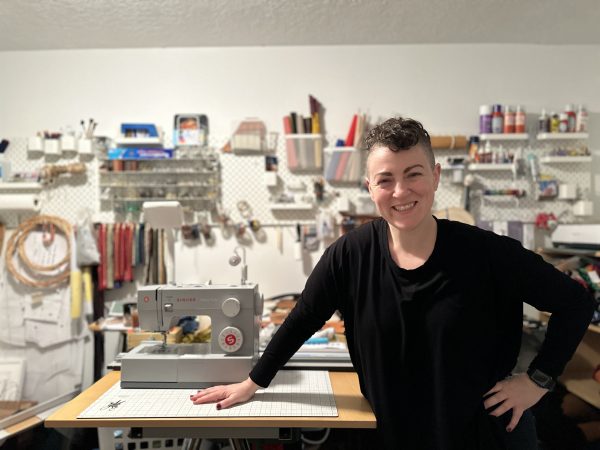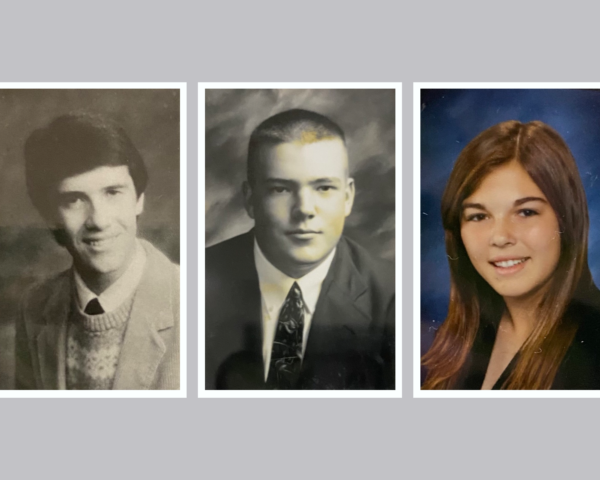What’s Happening to Charlie Crusader?
Jesuit students pose with an early rendition of Charlie Crusader.
In light of recent racial injustice and the Black Lives Matter Movement, sports teams and schools have been more receptive to changing offensive, racially insensitive team mascots to ones less inflammatory. Jesuit High School released an email at the end of July stating their intentions to not only discuss the appropriateness versus inappropriateness of Jesuit’s mascot, Charlie Crusader.
Charlie Crusader was chosen as the school’s mascot in Jesuit High School’s first year by students and administration. Possible mascots could have been the Voyagers, the Knights, or the Pilgrims, among others. On October 11, 1956, the student body voted, and the name Crusaders was chosen.
Vice Principal of Academics and Student Life Khalid Maxie said, “Jesuit’s Board of Trustees has appointed a Mascot Working Group comprised of 14 members of our community to begin seeking feedback from our various constituencies like students, faculty, staff, parents and parents of alums on the appropriateness [and inappropriateness] of the Crusader name and mascot in light of the mission, values, and identity of Jesuit High School.”
Maxie is a member of the Mascot Working Group (MWG), and meets with his team weekly. He says the group means to have open conversations with the Jesuit community and create opportunities for various constituency groups to participate in positive and constructive dialogue on the following question: In what ways do you think that the Crusader name and mascot are appropriate or inappropriate representations of Jesuit High School given our mission, values, and Ignatian principles?
“We plan to facilitate conversation with the Jesuit community about the Crusader name and mascot in a few ways: one would be the release of an online survey, and the other way will be through a series of live online community forums that will more than likely occur via Zoom,” Vice President of Communications and Public Affairs and member of the MWG Erika Tuenge said. “We are in the process, as a working group, of developing what those forums will look like.”
Maxie stated that the group’s role is to educate the Jesuit community about the Crusades and acknowledge their history. The goal, however, is not to redefine the Crusader to fit the values of the school.
“Our role is not to make a decision or push this process in any way,” Maxie said. “It is our job to make sure that we’re reaching out to all those [constituency] groups, and part of that requires the responsible thing that we’re currently working on: how do we educate our community about the history of Charlie the Crusader and the Crusades, as well as his cultural responsive implications?” Maxie said.
The MWG will gather information from constituency groups and provide the Board of Trustees with this information. Based on what they gather, the Board of Trustees will come to a decision as to what will happen to the Crusader name and mascot. Tuenge believes the Board of Trustees will make their final decision before mid-June.
In addition, members of the MWG must keep their biases to themselves when coming up with educational resources, while still keeping inclusivity in mind. To do this, the MWG will look to experts on the Crusades for facts and information.
“We hope to lean on scholars, professors who teach about the Crusades, to provide us with facts, leaning on the work of Holy Cross University who went through the same process” Maxie said. “They are a Jesuit Institution. The Crusader was and is their mascot. They decided to get rid of all the imagery but kept the Crusader name and redefined what it means to be a Crusader in this day and age.”
Tuenge commented that the diversity of the MWG will help the voices of the community feel heard.
“[The MWG represents] members of our community as far as alums, parents, past parents, faculty, staff, and students [who have a wide array of roles]. Because we are planning, strategizing, and collaborating together as a group, our hope is that we are coming up with a process that we’ll be proud of and that our community will be proud of, and they will want to share their opinions with us” Tuenge said.
Although members of the MWG cannot share their biases, the students of Jesuit High School are not without their own opinions.
For senior Naviya Venkitesh, the Crusader holds many fond memories of a school with an open community and racially diverse student population, however it is also a symbol of pain for her and her family.
“I think that the best option is that we should look into changing [the Crusader name and mascot],” Venkitesh said. “Obviously, that takes years and years. Right now, given our society’s climate around Islamophobia, I think it is necessary, especially for Catholics and Christians and Jesuit as a Catholic School, that we acknowledge the systemic racism and the Islamophobia that comes with having a mascot like Charlie Crusader.”
Venkitesh also believes that Jesuit students come from a place of not only socioeconomic privilege and cultural privilege, but racial privilege, and that our privilege needs to be checked because it is easy to become ignorant of discrimination felt by people of color all over the world.
“If a person is BIPOC (Black, Indigenous, People of Color) and they come from financial privilege, it does not necessarily mean they struggle with the same things [people who are] BIPOC who do not come from financial privilege struggle with,” Venkitesh said. “As a BIPOC woman, I feel safe in society, and that is not the case for a lot of BIPOC women across the globe. That is not the same for a lot of queer people or people in lower income housing.”
In contrast, senior Katya Kurkoski said she represents the population of students who have not been educated about the Crusades and the implications the Crusader name and mascot might give. She says that when the name Crusaders was first chosen to represent the school, it might have been a reflection of the work ethic and competitiveness Jesuit displayed.
“I can’t think of Jesuit as anything other than the Crusaders. It represents something I’ve known for years and years,” Kurkoski said. “I know the Crusades were wars, but when Jesuit was looking for a mascot a long time ago, I think they saw Crusaders as a positive thing, as people who fought for what they believed in.”
Unlike Venkitesh, Kurkoski is unsure as to whether the mascot should be changed or not.
“I don’t know what they would change the mascot to,” Kurkoski said. “The Crusader mascot has been around for years. Most of the student body hasn’t thought much into [the positives and negatives of the Crusader], and I am part of that population of students. I don’t think Jesuit should change the mascot.”
